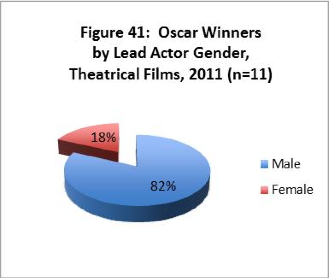The study of Bond et al shows that
instead of face-to-face interpersonal relationships, more people prefer to use
media to gather information during the coming-out process (40). However, they
also suggest that media may stress extreme stereotypes of LGBT people, and as a
result, warp other’s opinion towards them (41). The following clips excerpted
from Glee represent both of these two
points.
In this
episode of Glee, Kurt refuses to
admit his gayness. After being caught dancing “Single Ladies” by his dad, to
prove that he is not gay, he joins the football team and helps save the team
by, ironically, dancing. After the game he finally decides to face who he truly
is and comes out to his dad. Surprisingly his dad accepts it pretty well. It
turns out Kurt’s dad has always known that his son is gay. Although he does not
really like his son being that way, he still respects Kurt’s decision and loves
him anyway.
First of
all, by observing Kurt’s come out, many teenagers who are struggling with their
sexual identities may be inspired and may receive the message that coming out might
not harm them much or make
others love them less. Yes, it takes courage. But admitting who they are will
make them feel more relieved. It will also stop the people around them from
guessing and make them feel relaxed as well. When looking at this episode I
thought of some teenage films where gay teenagers kill themselves because they
cannot stand the judgment and pressure after coming out. Well this is not the
case for Kurt in Glee (but is the
case for someone else, which will be stated in the following paragraph), as
well as in many famous shows. Going along with Bond et al’s theory, the more
shows depicting smooth coming out experience, the more at ease teenagers would
feel about coming out in real life.
Meanwhile,
these excerpts also stress the stereotype that gay people tend to be “artsy” or
“theatre-y” or pay extra attention to things that are normally considered
“girly” such as skin care. All these characteristics of Kurt potentially imply
that certain types of gays are more acceptable and therefore easier to come
out, while others, like the masculine football player, Karofsky, in Glee, are hard to admit their sexual
orientation. It takes Karofsky way more mental struggle than Kurt to come out. Kurt, though has been bullied for who he is, just needs the courage to say it out load, but Karofsky struggles so much that
he even tries to kill himself. It may be true that in real life, it is harder
for non-stereotypical LGBT people to come out, but showing that struggle
completely without any valid solution does not help either. In Glee, although
Karofsky comes out eventually, this character may still stress the stereotypes
and make certain LGBT people in real life hide their identities even deeper.
Reference
Bradley J. Bond, Veronica Hefner, Kristin L. Drogos (2008)
Information-Seeking Practices during the Sexual Development of Lesbian, Gay,
and Bisexual Individuals: The Influence and Effects of Coming Out in a Mediated
Environment, Sexuality & Culture (2009) 13:32-50, DOI
10.1007/s12119-008-9041-y








